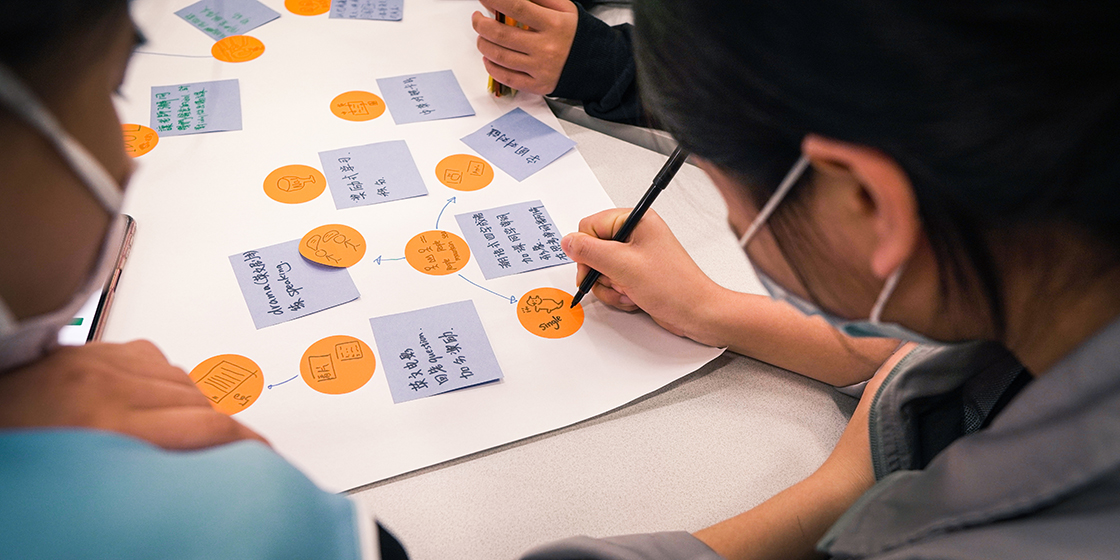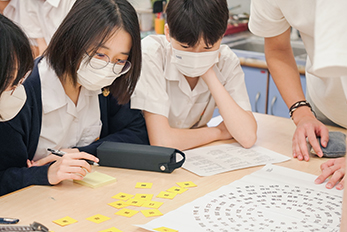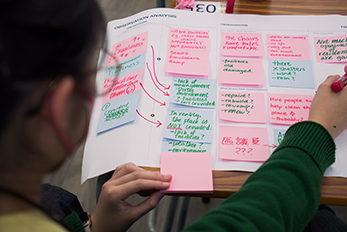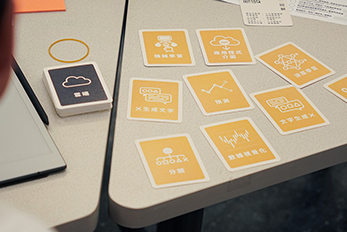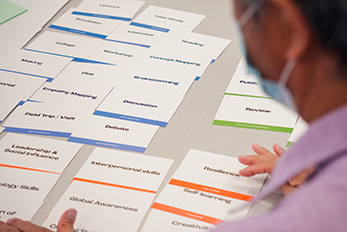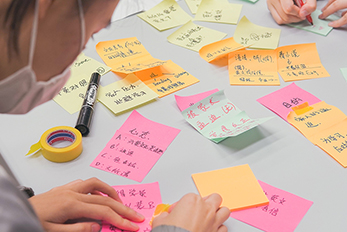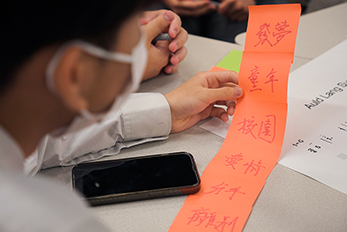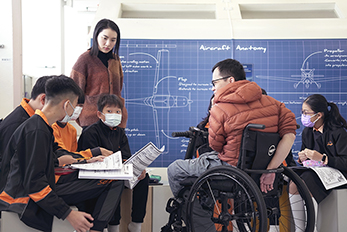WHAT is it?
This is a session for practising generating ideas, as random words are arbitrarily paired together for unexpected possibilities.
The goal is to get students into the habit of generating numerous ideas and imagining scenarios through users’ eyes.
WHY teach it?
This session encourages divergent thinking, and it familiarises students with the scenario-building tools that they will use very soon. Jamming ideas also builds their creative confidence.
HOW to do it?
Instructions:
▸ Collecting ideas #1 (A) (10 mins)
Ask the students to think of 5 things they could find at home*, and to write each thing on a single sheet.
Collect all of the ideas and show the repeated ones to the class as proof of how cliché the ideas are.
Ask them to think of 5 other things, encouraging them to think of things that are not so obvious.
Choose one from each group.
▸ Collecting ideas #2 (B) (10 mins)
Ask the students to think of 5 things they could find in the streets.*
Collect all of the sheets and immediately ask them to think of 5 more things.
Again choose one from each group.
*You do not have to use home and street, but do try to select pairs that are mutually exclusive or even dichotomies.
▸ Force combining (30 mins)
Randomly combine the things from A with B and hand the newly combined ideas back to each group.**
**Facilitators could try the most ridiculous combinations.
▸ Scenario building (10 mins)
Making use of the comic strip tool, ask the students to imagine the scenario of this new compound concept/product/service.
Ask them to imagine the scenario through the lens of the user.
The comic strip proceeds from Need to Design Direction to Solution and finally to Value.
▸ Presentation and debriefing (20 mins)
Teaching Tips
+ This session is mainly for fun and to engage students; if this is not needed, you could go straight to Forced Combination 2.
+ It is useful to give examples.
+ For the scenario building, the Inspiration Cards can be used as a visual reference for the students.




